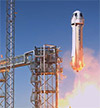Critical Site Selection Factor #1: Availability of Skilled Labor
It pretty much goes without saying that any operation — new or expanding — will need an adequate supply of workers who have whatever skills are required to do the job well.
Q4 2016
There is broad agreement that a lot of facilities are raising the bar when it comes to the skill levels that are essential. The question is, how does availability of skilled labor impact the site search and decision-making process?
“To me, this [factor] has to be the most important one, almost with an emphasis on it,” says Richard H. Thompson, international director for Supply Chain & Logistics Solutions for JLL. And indeed, respondents to Area Development’s most recent Corporate Survey agree — “availability of skilled labor” heads the list of the top factors.
So, how challenging is it to find the necessary labor? It depends on the particular location, of course, and what kind of labor is required, but generally speaking, “it’s becoming harder to find exactly the labor you want when you come into an area,” according to Christopher D. Lloyd, senior vice president, Infrastructure and Economic Development, at McGuireWoods Consulting, LLC. “You’re starting to see areas of the country where there is a lack of skilled labor.”
There are plenty of factors behind this trend, including the advancing retirement of the baby-boom generation, employers’ increasing education and skills requirements, and the simple fact that with the economy in better shape than it was several years ago, “a lot of people with the right skills are already employed,” Lloyd says. If there aren’t enough potential workers with the skills today, how many can be prepared for the work in a reasonable amount of time? “No matter the nature of the project, the ability to train or retrain existing labor is the highest priority,” he notes.
It’s not just skilled labor. America’s ability to compete is at that high end. North America is going to compete on intellectual capital — the ability to innovate, the ability to convert ideas into applications that are marketable. Gene DePrez, managing partner, Global Innovation Partners Ltd. Thompson says the ever-increasing popularity of e-commerce is fueling the increasing demand for labor at distribution centers. “If you have a traditional retail distribution center, a big distribution center serving retail stores, most of that is on pallets moving in and out by the truckload or less-than-truckload,” he says. An e-commerce distribution hub, on the other hand, can require as many as 10 times the workers. “Because it’s very individual, pick-and-pack, even with automation you still require a ton of people. That really creates a huge weight on labor when it comes to selecting a site,” Thompson explains.
Access to Talent
“The most important thing I’ve been hearing is talent, access to high-level, highly skilled workers, particularly in terms of intellectual capital,” says Gene DePrez, managing partner, Global Innovation Partners Ltd. “It’s not just skilled labor. America’s ability to compete is at that high end. North America is going to compete on intellectual capital — the ability to innovate, the ability to convert ideas into applications that are marketable.”
Companies seeking that type of workforce, he says, are more likely to pick sites in urban areas. “Young people want to flock to urban areas; they want to be in cool communities,” DePrez says.
Meanwhile, manufacturing facilities may have greater flexibility in terms of the type of community, but they’re increasingly particular when it comes to skills. Conventional wisdom is that they’ve been hit increasingly hard by labor challenges, though not everyone is buying that mindset.
One recent study, “Skill Demands and Mismatch in U.S. Manufacturing,” suggests “three-quarters of manufacturing establishments do not show signs of hiring difficulties.” What’s more, report study authors Andrew Weaver and Paul Osterman say, “High-tech plants do not experience greater levels of hiring challenges.”
On the other hand, according to the study, locating within an industry cluster doesn’t necessarily make it easier to fill vacancies. A vital ingredient is the ability to connect potential hires with the right training, potentially through community colleges or trade associations. As Lloyd observes, the secret isn’t just a matter of finding available skilled labor — in many cases the answer is creating it.
Project Announcements
Tate Plans Glasgow, Kentucky, Manufacturing Operations
10/28/2025
Electrolux Consumer Products Expands Kinston, North Carolina, Manufacturing Operations
10/28/2025
Canada-Based MST Rebar Plans Bladenboro, North Carolina, Manufacturing Operations
10/28/2025
Cardinal Biologicals Expands Cape Girardeau, Missouri, Operations
10/27/2025
Whirlpool Expands Clyde-Marion, Ohio, Production Operations
10/27/2025
Imperial Systems Plans Pennsylvania, Manufacturing Operations
10/27/2025
Most Read
-
2025’s Top States for Business: How the Winners Are Outpacing the Rest
Q3 2025
-
The Compliance Reckoning Is Here
Q3 2025
-
Around the Horn: Data Center Supply Chains — What's Next?
Q3 2025
-
Data Center Demand Stabilizes Amid Changing Market Forces
Q3 2025
-
How Consumer Trends Are Reshaping Food Facilities
Q3 2025
-
Powering the Next Generation of Projects
Q3 2025
-
First Person: Filter King’s Expansion Playbook
Q3 2025



